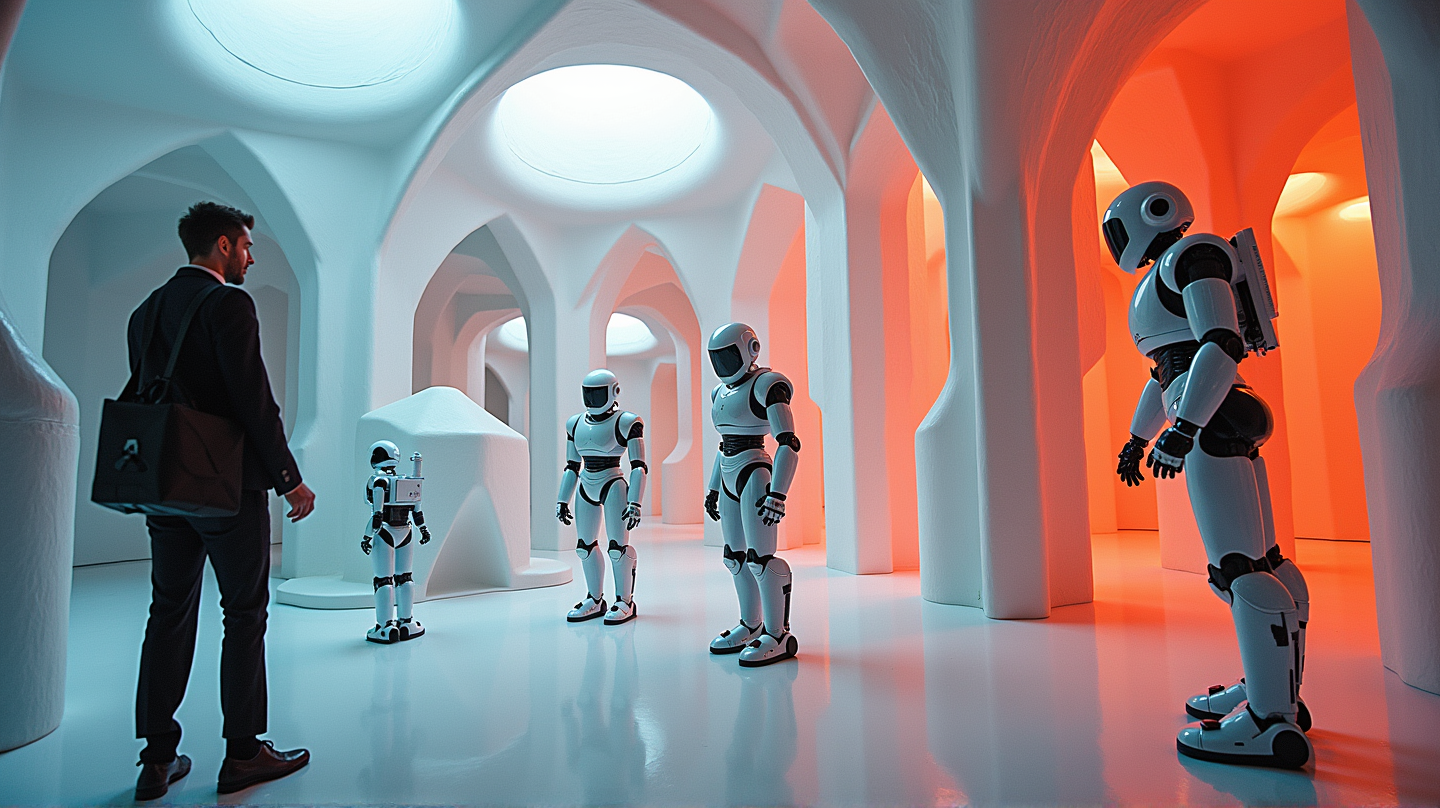This year’s Venice Biennale once again proves its innovative spirit, as ‘A Robot’s Dream’ captures the attention of visitors with its thought-provoking exploration of robotics in architecture. This exhibition, set within the overarching theme “Intelligens. Natural. Artificial. Collective.”, invites audiences to ponder the evolving role of humanoid machines in our built environments.
The Humanoid Encounter
The installation features a humanoid robot, which stands as a beacon of contemplation, presenting an opportunity for visitors to reflect on the surge of robotics in building projects. It’s an emblem of convergence—where automation, age-old craftsmanship, and material use seamlessly intersect. According to Robotics & Automation News, the experience is designed to evoke empathy, whilst critiquing the altered landscape of architectural practices and social dynamics.
The Art of Crafting and Automation
‘A Robot’s Dream’ challenges its audience to consider what is gained—and possibly lost—in the dance between human skill and machine efficiency. As robotic arms become more commonplace on construction sites, the installation encourages viewers to assess the shift in craftsmanship and connectivity. In the demonstration is a rebar structure by MESH, assembled using low-carbon steel and slated for further repurposing—a nod to sustainable, circular methodologies in architecture.
An Open Dialogue on the Future
Unlike conventional exhibitions that dictate answers, ‘A Robot’s Dream’ provokes an open dialogue. Attendees are urged to weigh the impacts of new systems on our environments and daily lives. By not prescribing solutions, it fosters a critical evaluation of how artificial intelligence might influence future interactions and habitats.
Fostering this conversation at Venice Biennale 2025, ‘A Robot’s Dream’ is more than an exhibit; it’s a narrative portal into the possible futures of architectural evolution, one that needs to be experienced to be fully appreciated. What does the future hold for our urban landscapes with the advent of such technologies? Only time—and human ingenuity—will tell.
